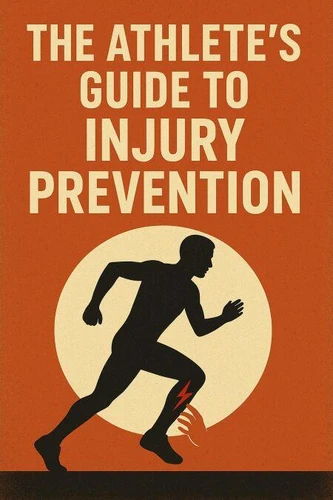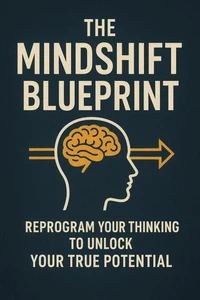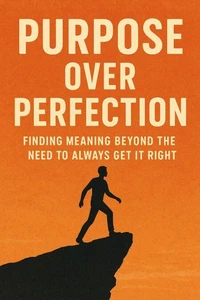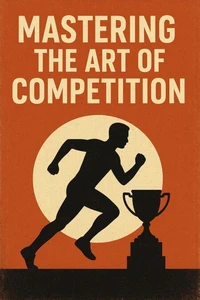Nouveauté
The Athlete's Guide to Injury Prevention
Par :Formats :
Disponible dans votre compte client Decitre ou Furet du Nord dès validation de votre commande. Le format ePub est :
- Compatible avec une lecture sur My Vivlio (smartphone, tablette, ordinateur)
- Compatible avec une lecture sur liseuses Vivlio
- Pour les liseuses autres que Vivlio, vous devez utiliser le logiciel Adobe Digital Edition. Non compatible avec la lecture sur les liseuses Kindle, Remarkable et Sony
 , qui est-ce ?
, qui est-ce ?Notre partenaire de plateforme de lecture numérique où vous retrouverez l'ensemble de vos ebooks gratuitement
Pour en savoir plus sur nos ebooks, consultez notre aide en ligne ici
- FormatePub
- ISBN8232020941
- EAN9798232020941
- Date de parution15/11/2025
- Protection num.pas de protection
- Infos supplémentairesepub
- ÉditeurHamza elmir
Résumé
Book DescriptionThe Athlete's Guide to Injury Prevention is a comprehensive, evidence-based resource designed to help athletes of all levels reduce injury risk and sustain long-term athletic performance. This extensive guide systematically addresses every aspect of injury prevention, from understanding the fundamental science of how injuries occur to implementing practical protocols that protect against tissue breakdown.
The book begins by exploring the scientific foundations of sports injuries-their mechanisms, common types, and the true costs they impose physically, financially, psychologically, and professionally. It then provides detailed instruction on anatomy, biomechanics, risk factors, and the essential injury prevention mindset that separates durable athletes from injury-prone competitors. Through 31 comprehensive chapters, readers learn practical strategies including movement assessment techniques, methods for building athletic resilience, proper warm-up and cool-down protocols, strength training for injury protection, flexibility and mobility work, balance and proprioception training, and core stability development.
The guide offers sport-specific recommendations for runners, team sport athletes, strength and power competitors, overhead and throwing athletes, and combat sports participants, recognizing that each discipline presents unique injury patterns requiring targeted prevention approaches. Beyond physical preparation, the book addresses crucial lifestyle factors including nutrition for tissue health, sleep optimization, hydration strategies, stress management, and equipment considerations.
It teaches athletes to recognize early warning signs of developing problems, understand when professional evaluation is necessary, navigate rehabilitation effectively, and return to sport safely while minimizing re-injury risk. The guide concludes with perspectives on long-term athlete development, emphasizing sustainable approaches that prioritize career longevity over short-term performance gains, making it essential reading for athletes, coaches, trainers, parents, and sports medicine professionals committed to reducing the injury burden that has historically plagued athletic participation.
The book begins by exploring the scientific foundations of sports injuries-their mechanisms, common types, and the true costs they impose physically, financially, psychologically, and professionally. It then provides detailed instruction on anatomy, biomechanics, risk factors, and the essential injury prevention mindset that separates durable athletes from injury-prone competitors. Through 31 comprehensive chapters, readers learn practical strategies including movement assessment techniques, methods for building athletic resilience, proper warm-up and cool-down protocols, strength training for injury protection, flexibility and mobility work, balance and proprioception training, and core stability development.
The guide offers sport-specific recommendations for runners, team sport athletes, strength and power competitors, overhead and throwing athletes, and combat sports participants, recognizing that each discipline presents unique injury patterns requiring targeted prevention approaches. Beyond physical preparation, the book addresses crucial lifestyle factors including nutrition for tissue health, sleep optimization, hydration strategies, stress management, and equipment considerations.
It teaches athletes to recognize early warning signs of developing problems, understand when professional evaluation is necessary, navigate rehabilitation effectively, and return to sport safely while minimizing re-injury risk. The guide concludes with perspectives on long-term athlete development, emphasizing sustainable approaches that prioritize career longevity over short-term performance gains, making it essential reading for athletes, coaches, trainers, parents, and sports medicine professionals committed to reducing the injury burden that has historically plagued athletic participation.
Book DescriptionThe Athlete's Guide to Injury Prevention is a comprehensive, evidence-based resource designed to help athletes of all levels reduce injury risk and sustain long-term athletic performance. This extensive guide systematically addresses every aspect of injury prevention, from understanding the fundamental science of how injuries occur to implementing practical protocols that protect against tissue breakdown.
The book begins by exploring the scientific foundations of sports injuries-their mechanisms, common types, and the true costs they impose physically, financially, psychologically, and professionally. It then provides detailed instruction on anatomy, biomechanics, risk factors, and the essential injury prevention mindset that separates durable athletes from injury-prone competitors. Through 31 comprehensive chapters, readers learn practical strategies including movement assessment techniques, methods for building athletic resilience, proper warm-up and cool-down protocols, strength training for injury protection, flexibility and mobility work, balance and proprioception training, and core stability development.
The guide offers sport-specific recommendations for runners, team sport athletes, strength and power competitors, overhead and throwing athletes, and combat sports participants, recognizing that each discipline presents unique injury patterns requiring targeted prevention approaches. Beyond physical preparation, the book addresses crucial lifestyle factors including nutrition for tissue health, sleep optimization, hydration strategies, stress management, and equipment considerations.
It teaches athletes to recognize early warning signs of developing problems, understand when professional evaluation is necessary, navigate rehabilitation effectively, and return to sport safely while minimizing re-injury risk. The guide concludes with perspectives on long-term athlete development, emphasizing sustainable approaches that prioritize career longevity over short-term performance gains, making it essential reading for athletes, coaches, trainers, parents, and sports medicine professionals committed to reducing the injury burden that has historically plagued athletic participation.
The book begins by exploring the scientific foundations of sports injuries-their mechanisms, common types, and the true costs they impose physically, financially, psychologically, and professionally. It then provides detailed instruction on anatomy, biomechanics, risk factors, and the essential injury prevention mindset that separates durable athletes from injury-prone competitors. Through 31 comprehensive chapters, readers learn practical strategies including movement assessment techniques, methods for building athletic resilience, proper warm-up and cool-down protocols, strength training for injury protection, flexibility and mobility work, balance and proprioception training, and core stability development.
The guide offers sport-specific recommendations for runners, team sport athletes, strength and power competitors, overhead and throwing athletes, and combat sports participants, recognizing that each discipline presents unique injury patterns requiring targeted prevention approaches. Beyond physical preparation, the book addresses crucial lifestyle factors including nutrition for tissue health, sleep optimization, hydration strategies, stress management, and equipment considerations.
It teaches athletes to recognize early warning signs of developing problems, understand when professional evaluation is necessary, navigate rehabilitation effectively, and return to sport safely while minimizing re-injury risk. The guide concludes with perspectives on long-term athlete development, emphasizing sustainable approaches that prioritize career longevity over short-term performance gains, making it essential reading for athletes, coaches, trainers, parents, and sports medicine professionals committed to reducing the injury burden that has historically plagued athletic participation.






















